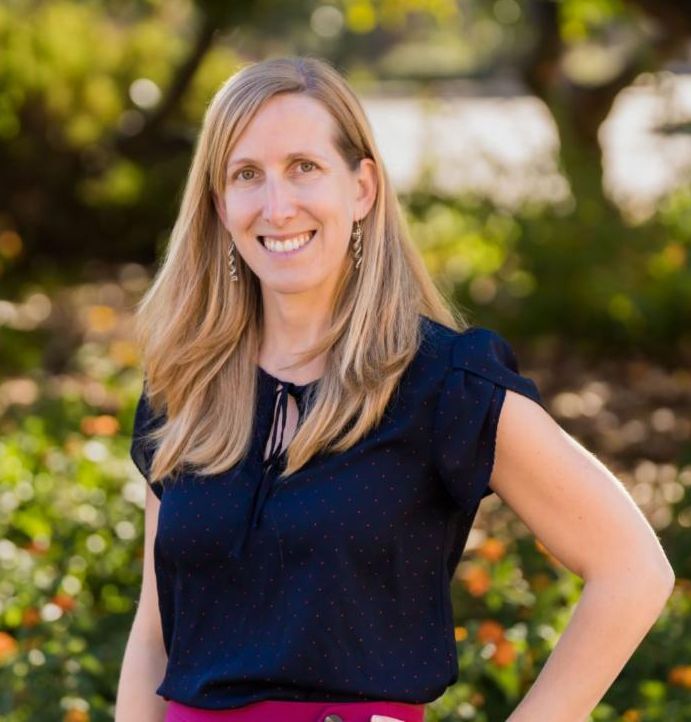Colloquia & Guest Speakers
Lighting up the oceans: High-Q metasurfaces for multi-omic analysis of aquatic ecosystems
Professor Jennifer Dionne, Senior Associate Vice Provost of Research Platforms/Shared Facilities, Associate Professor of Materials Science and Engineering, Stanford University
Monday, January 30, 2023
3:30 p.m.
Presented Remotely on Zoom
Zoom Information
Zoom: https://rochester.zoom.us/j/95276747247?pwd=WlBieEFIWUg2N0Y3bDFsa25KcFZCQT09
Meeting ID: 952 7674 7247
Passcode: 964579
Abstract
The oceans are the largest biological habitat in the known universe and are among the least charted. Covering over two and a half times the area of Mars, the oceans host diverse microorganisms that cycle nearly all chemical elements and are responsible for half of the global photosynthetic activity. Yet, studying the marine microbiome remains an outstanding challenge. Very few marine microbes have been successfully cultured under laboratory conditions, and culture-free methods like genomics and mass spectrometry are incompatible with the real time measurements necessary to study how physicochemical drivers impact microbial nutrient cycling. Here, we present our efforts to simultaneously and rapidly measure multiple ‘omic’ signatures from the ocean. First, we combine Raman spectroscopy and deep learning to accurately classify bacteria by both species and antibiotic resistance in a single step. With a convolutional neural network (CNN), we achieve species identification and antibiotic susceptibility accuracies similar to leading mass spectrometry techniques. Next, we describe resonant nanophotonic surfaces that enable detection of genes, proteins, and metabolites with zeptomolar sensitivity. These metasurfaces produce a large amplification of the electromagnetic field intensity, increasing the response to minute refractive index changes from target binding; simultaneously, the light is beam-steered to particular detector pixels. By combining metasurface design with acoustic bioprinting for functionalization, we produce develop chips that detect gene fragments, proteins, and small molecule toxins on the same platform. We discuss integration of these sensors with autonomous underwater robots from Monterey Bay Aquarium Research Institute (MBARI) for real-time phytoplankton and phycotoxin detection.
Biography

Jennifer Dionne is the Senior Associate Vice Provost of Research Platforms/Shared Facilities at Stanford, and an associate professor of Materials Science and Engineering and, by courtesy, of Radiology. She is also a Chan Zuckerberg Biohub Investigator, an Associate Editor of Nano Letters, and director of the DOE-funded Photonics at Thermodynamic Limits Energy Frontier Research Center. Jen received her BS degrees in Physics and Systems Science and Mathematics from Washington University in St. Louis, her PhD in Applied Physics at the California Institute of Technology in 2009, and her postdoctoral training in Chemistry at Berkeley. As a pioneer of nanophotonics, she is passionate about developing methods to observe and control chemical and biological processes as they unfold with nanometer scale resolution, emphasizing critical challenges in global health and sustainability. Her research has developed culture-free methods to detect pathogens and their antibiotic susceptibility; amplification-free methods to detect nucleic acids and proteins; and new methods to image light-driven chemical reactions with atomic-scale resolution. Her work has been recognized with the Alan T. Waterman Award, a NIH Director’s New Innovator Award, a Moore Inventor Fellowship, the Materials Research Society Young Investigator Award, and the Presidential Early Career Award for Scientists and Engineers, and was featured on Oprah’s list of “50 Things that will make you say ‘Wow’!”. Jen is passionate about translating scientific inventions to commercial innovations, and is co-founder of Pumpkinseed, a company enabling life-speed reads of biological bits. She also perceives outreach as a critical component of her role and frequently collaborates with visual and performing artists to convey the beauty of science to the broader public. Beyond the lab, Jen enjoys long-distance cycling, trail running, and reliving her childhood with her two young sons.
